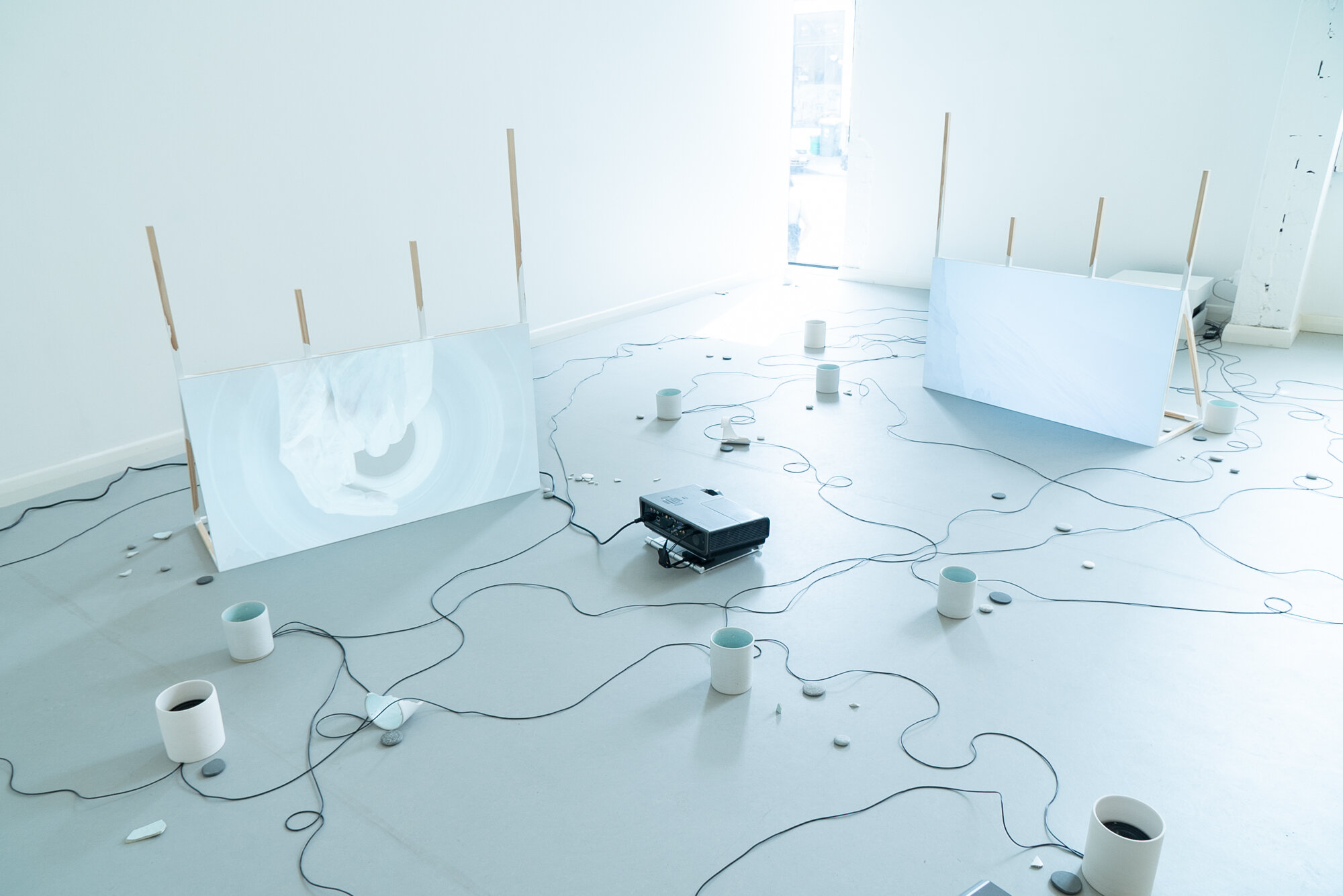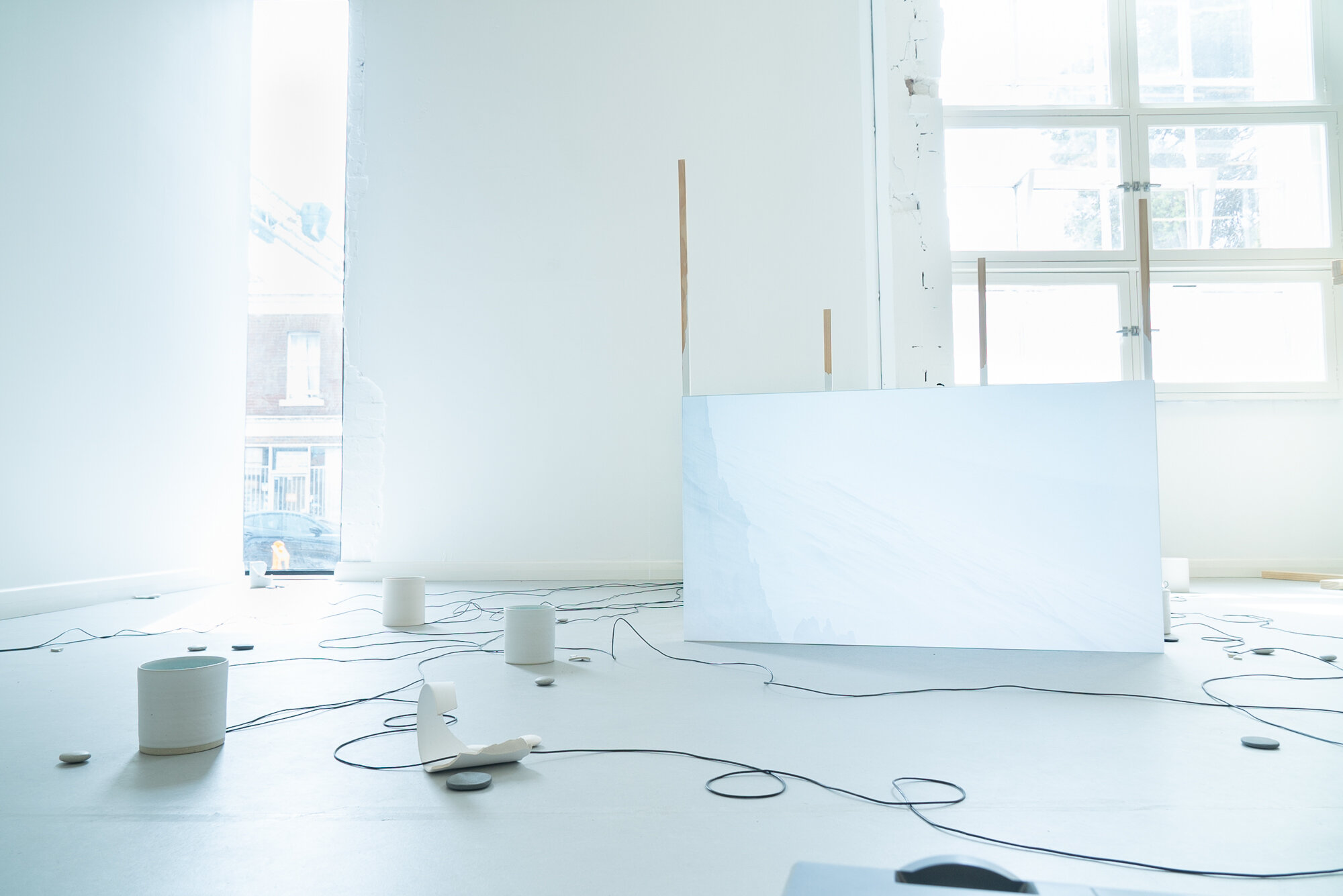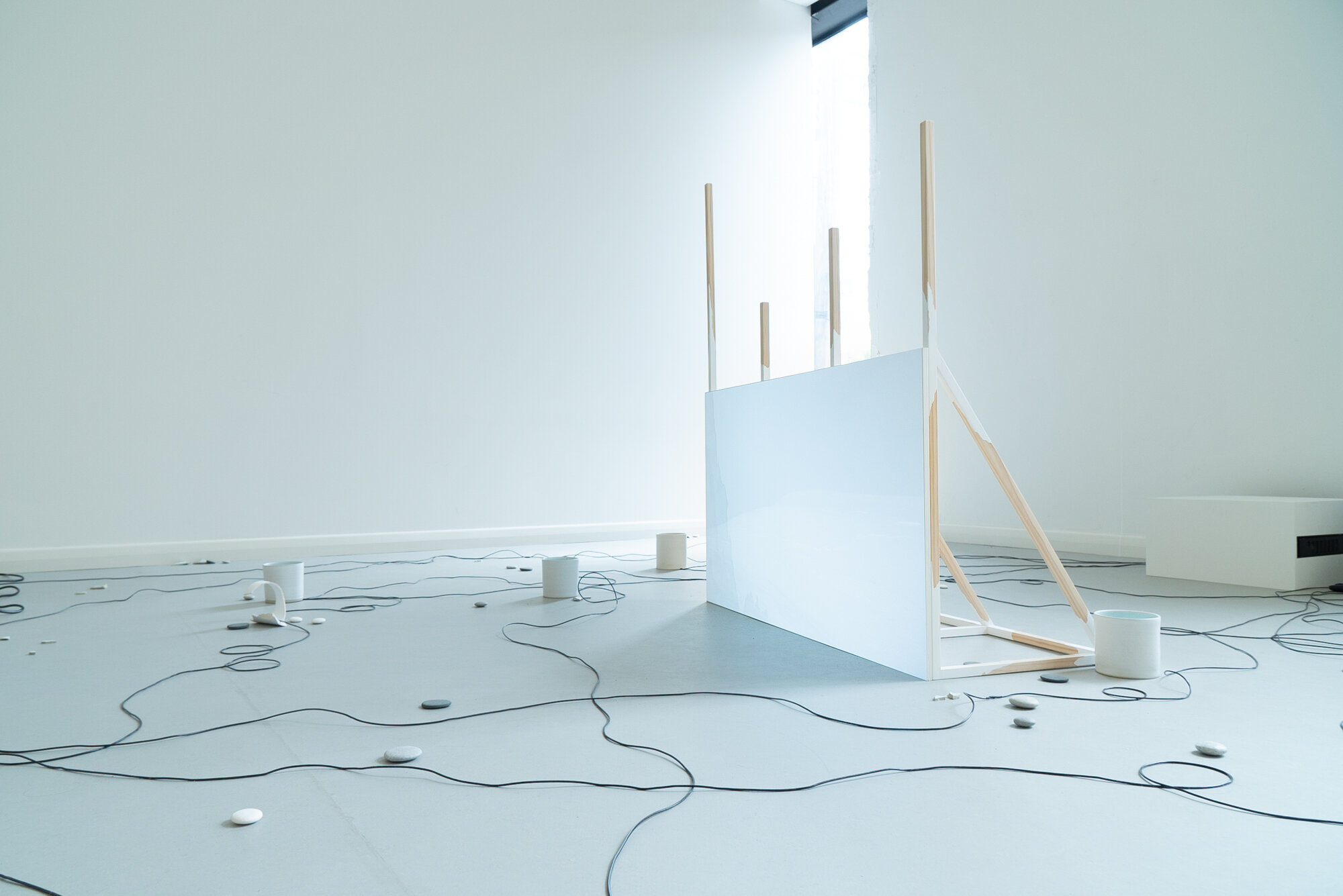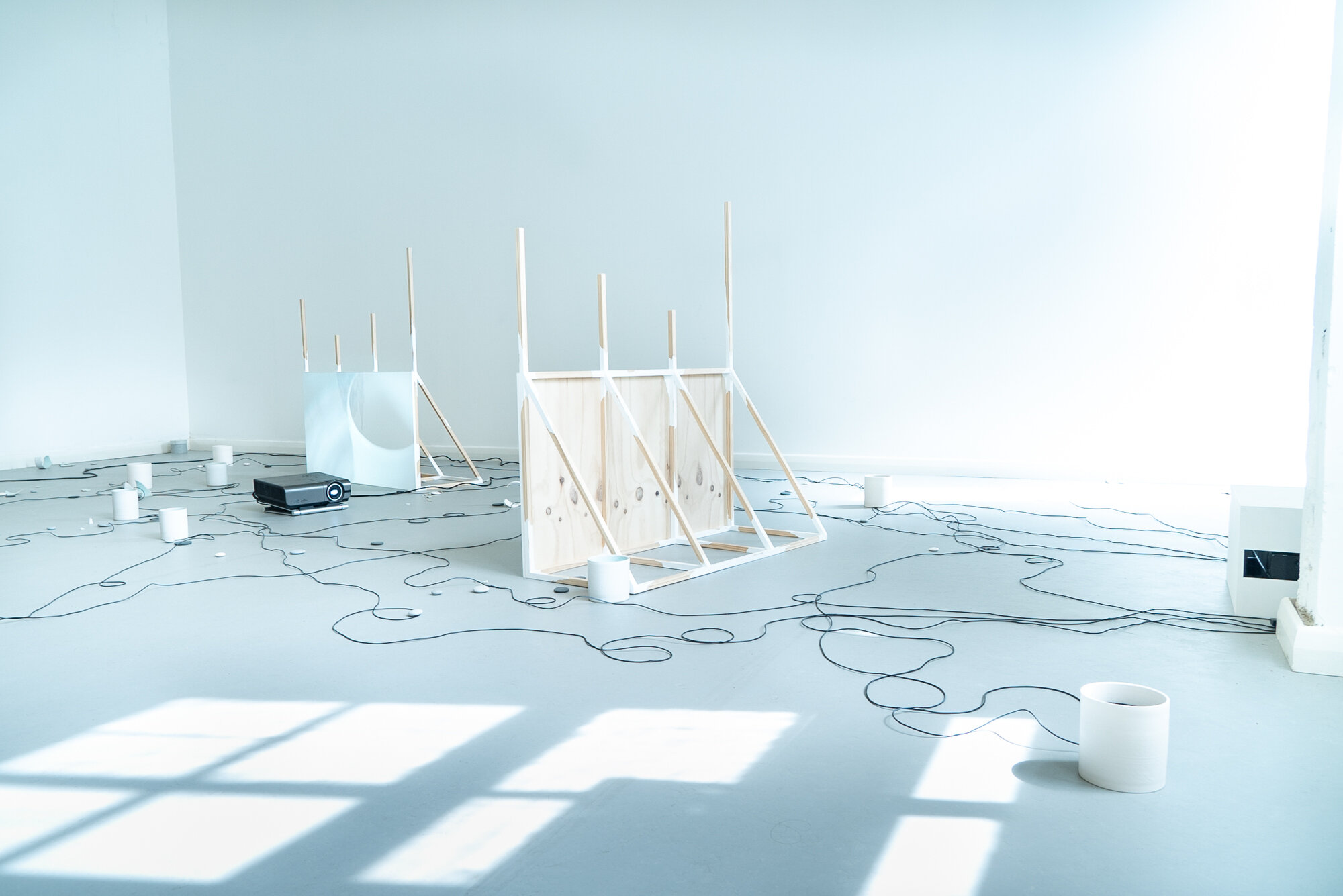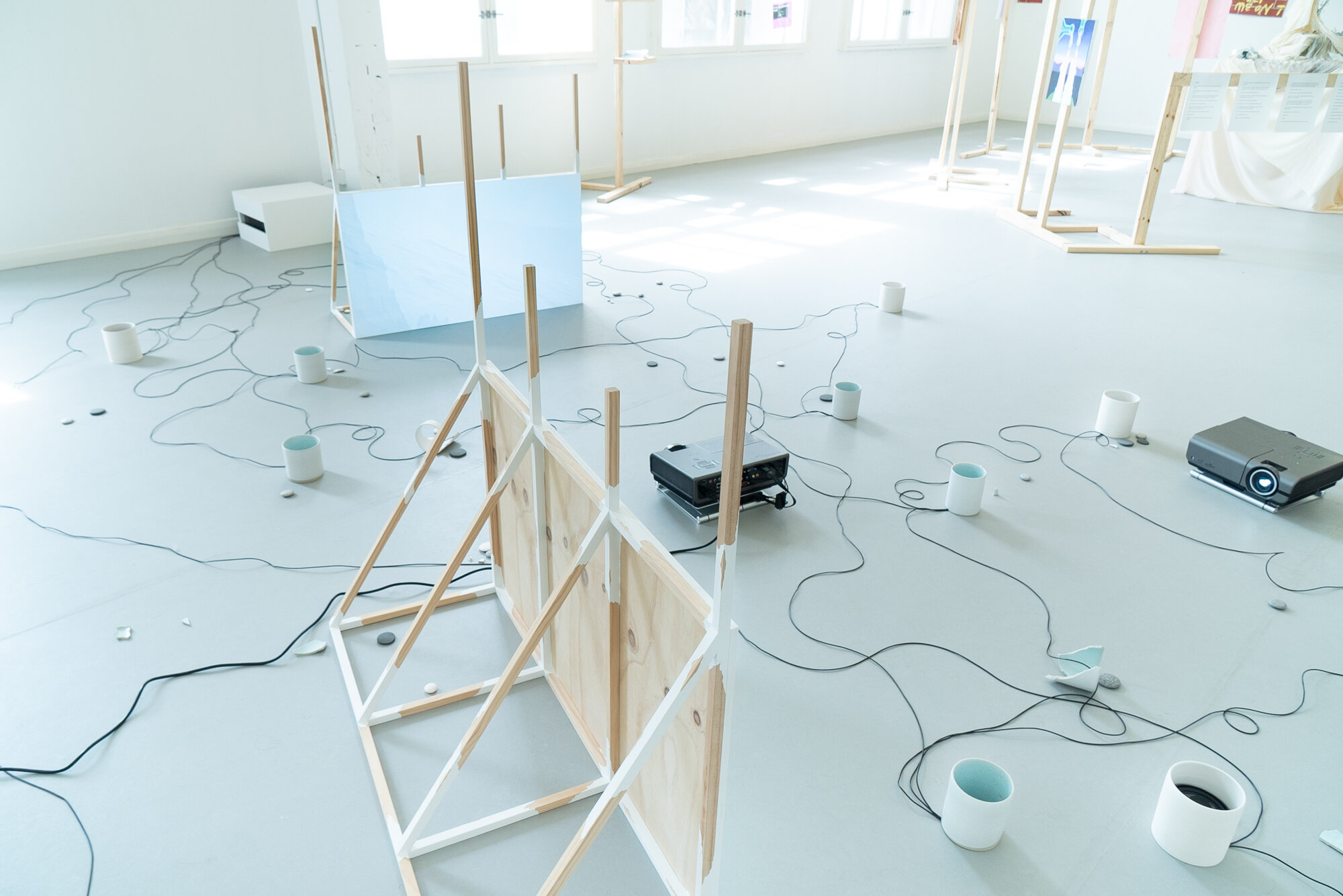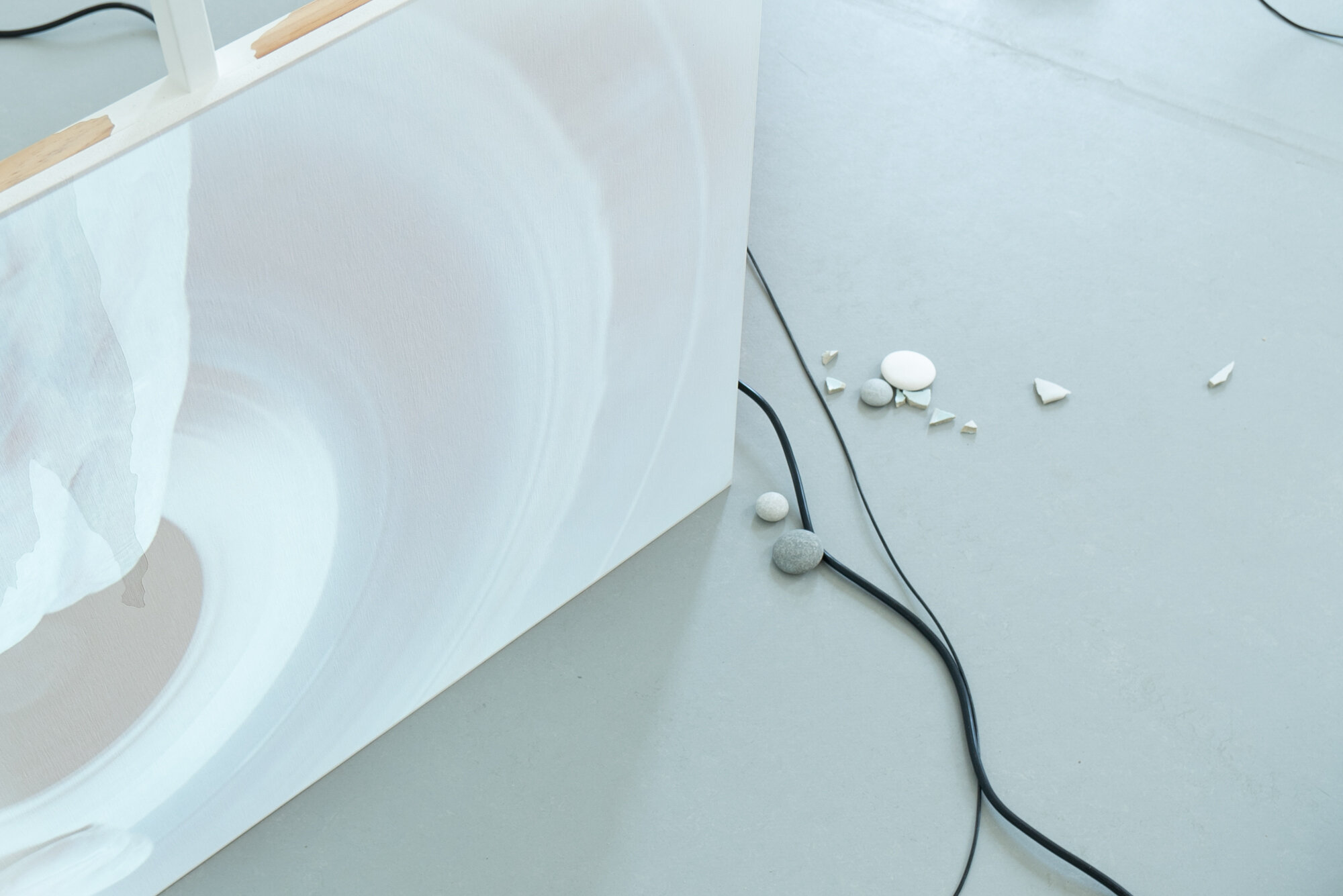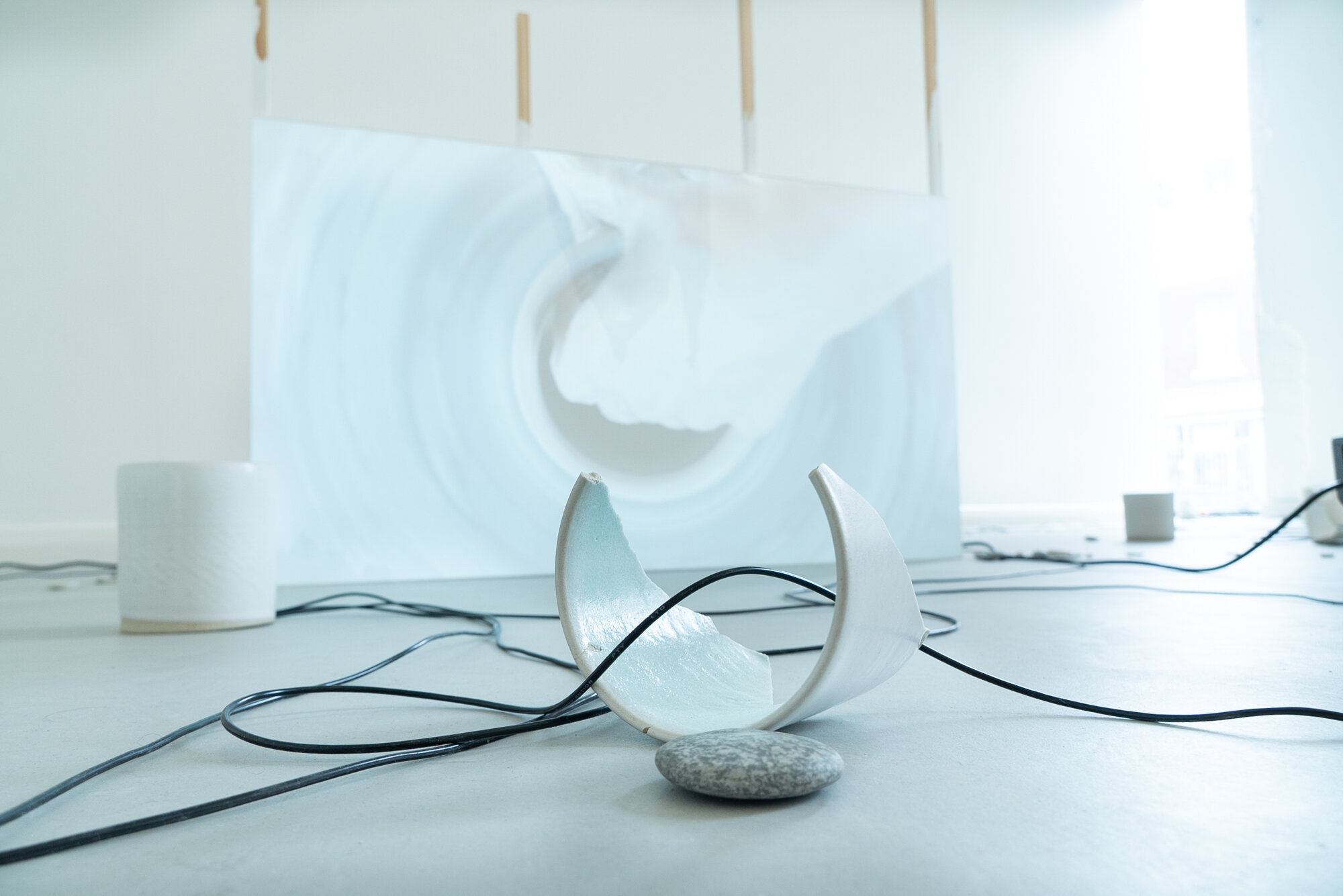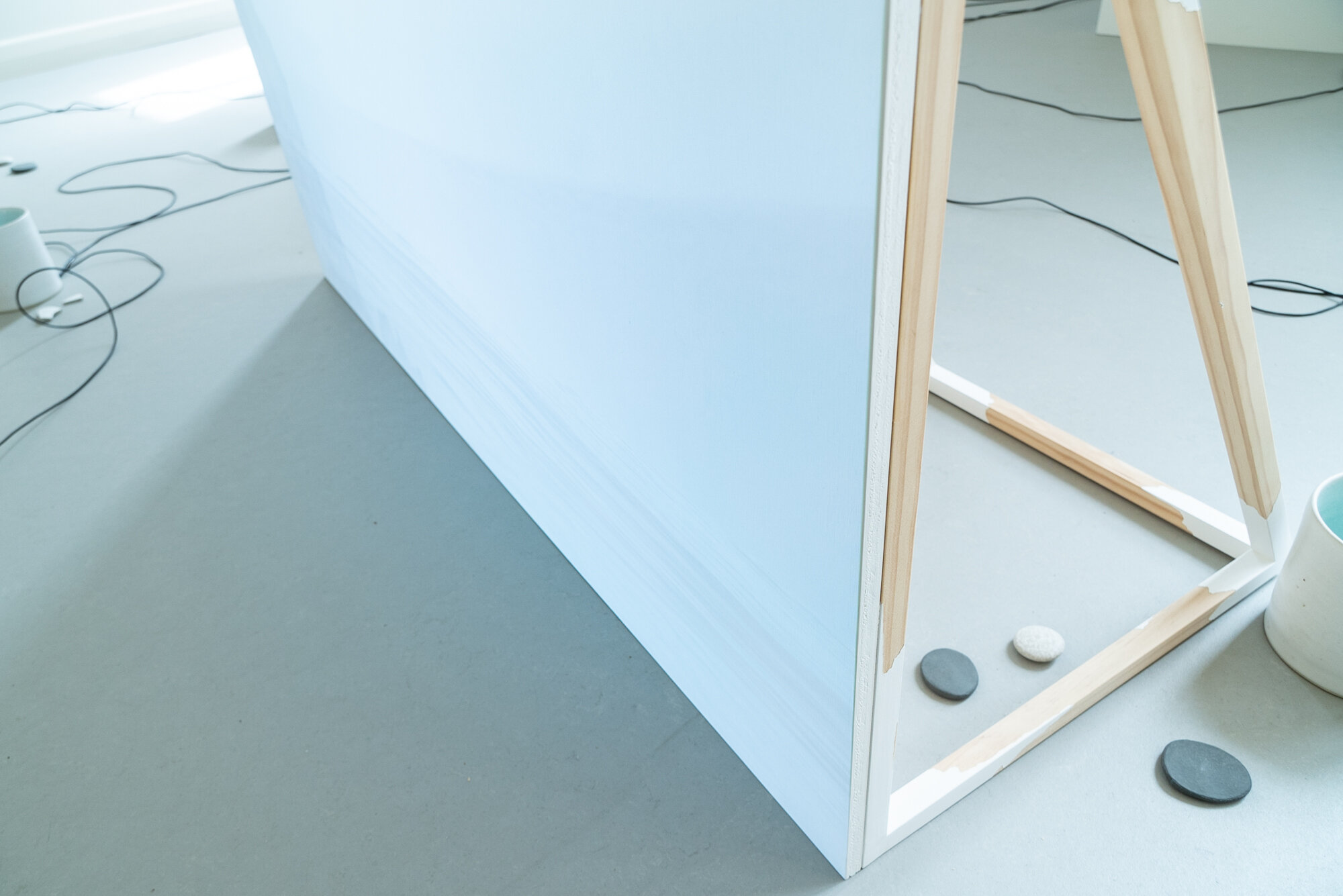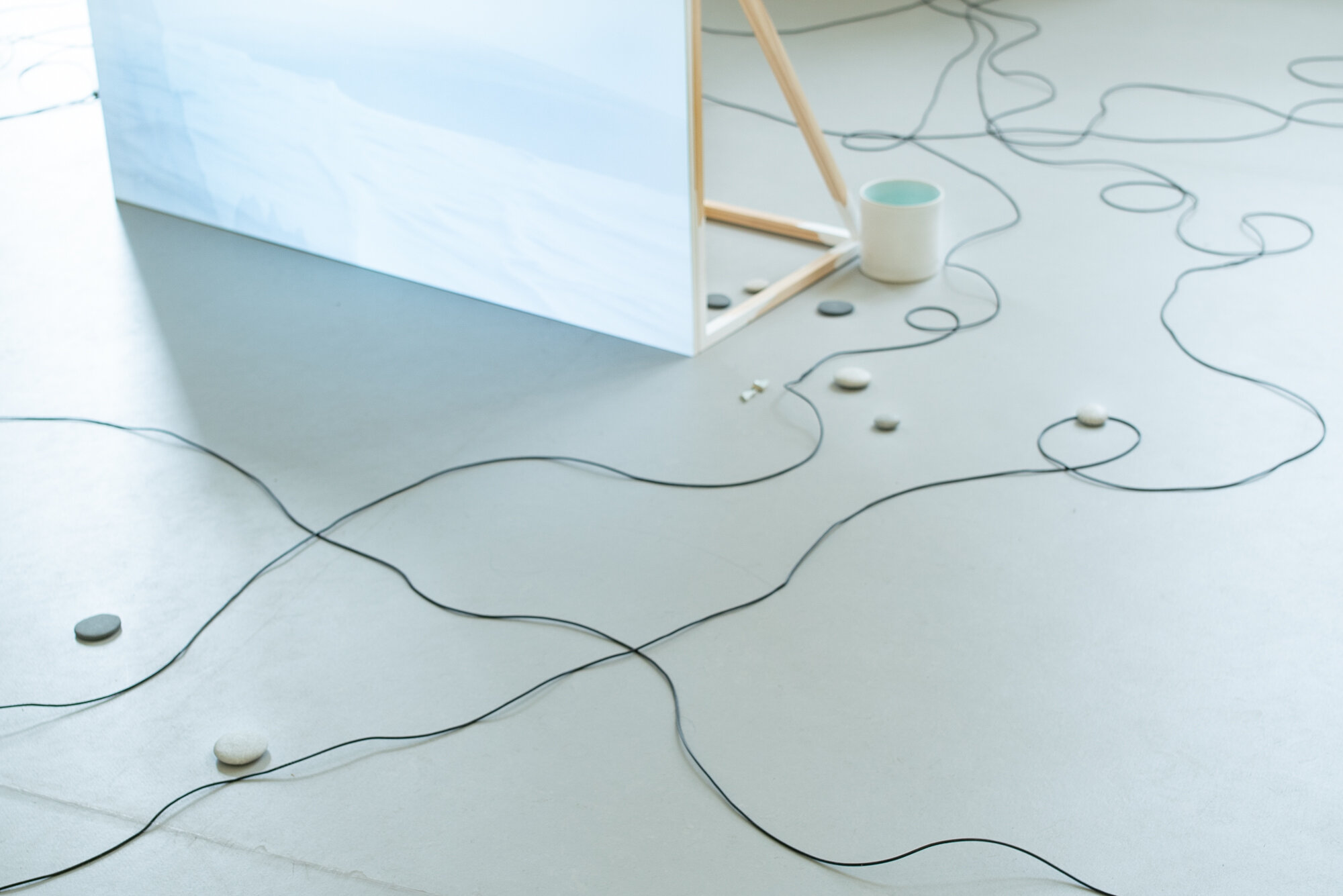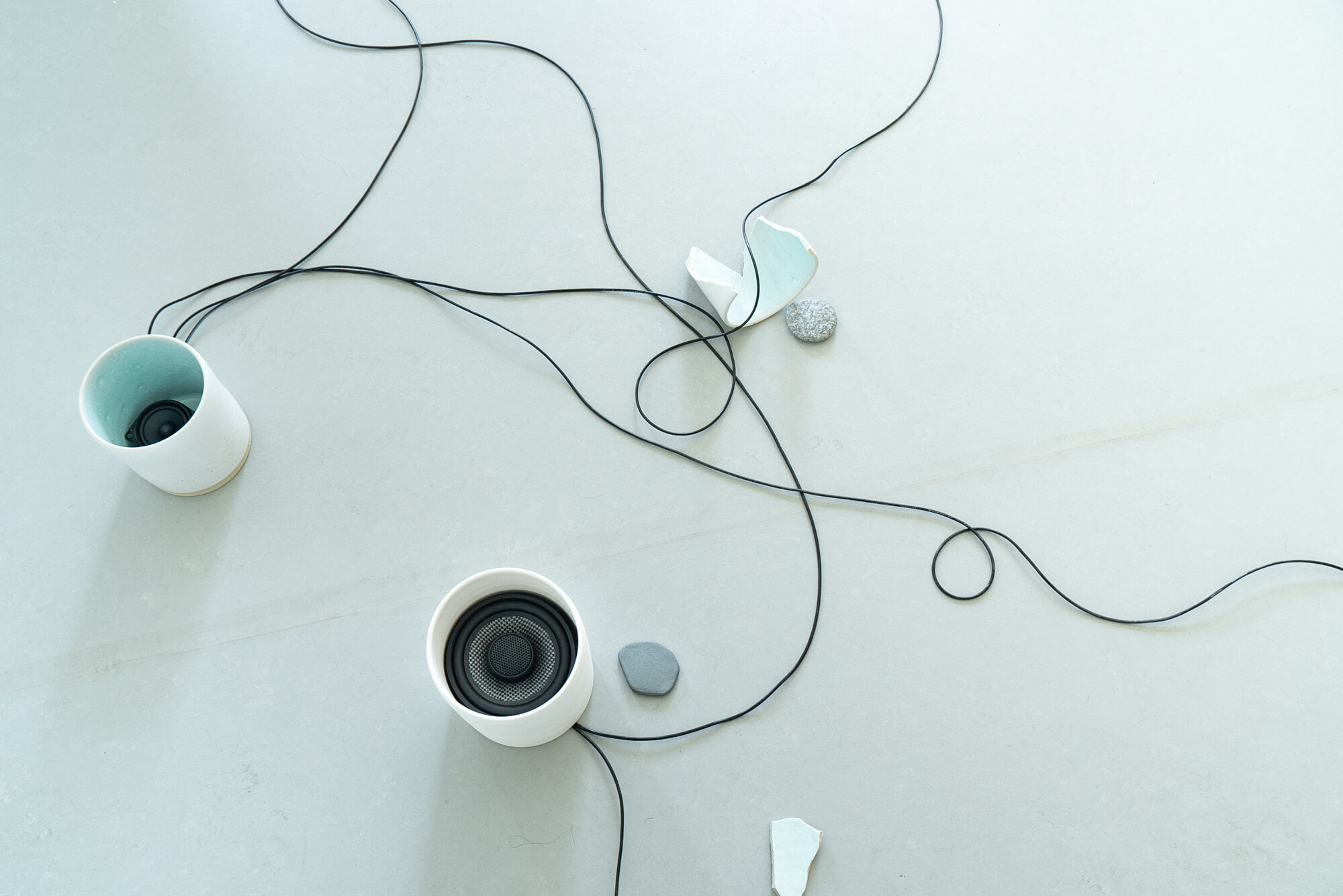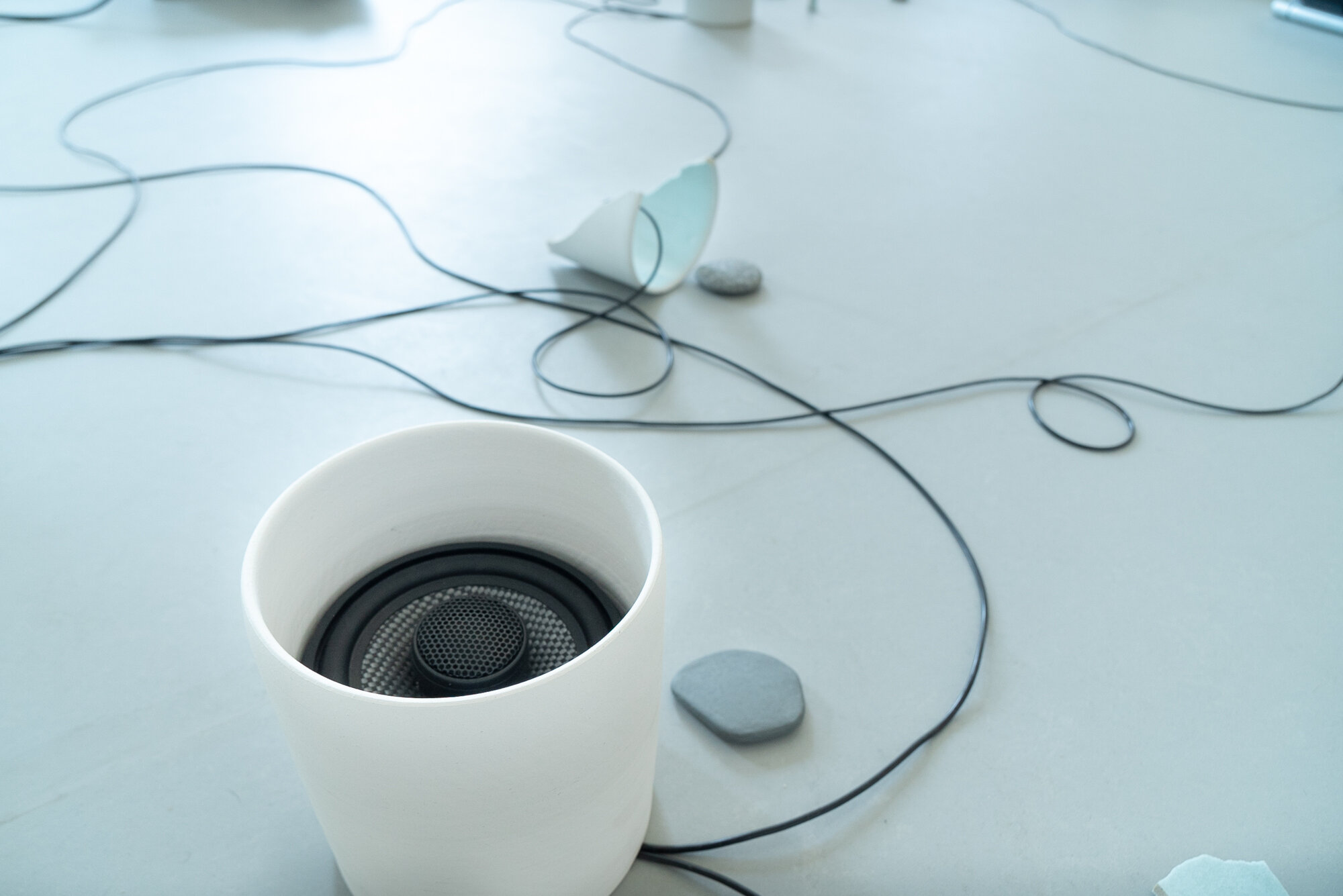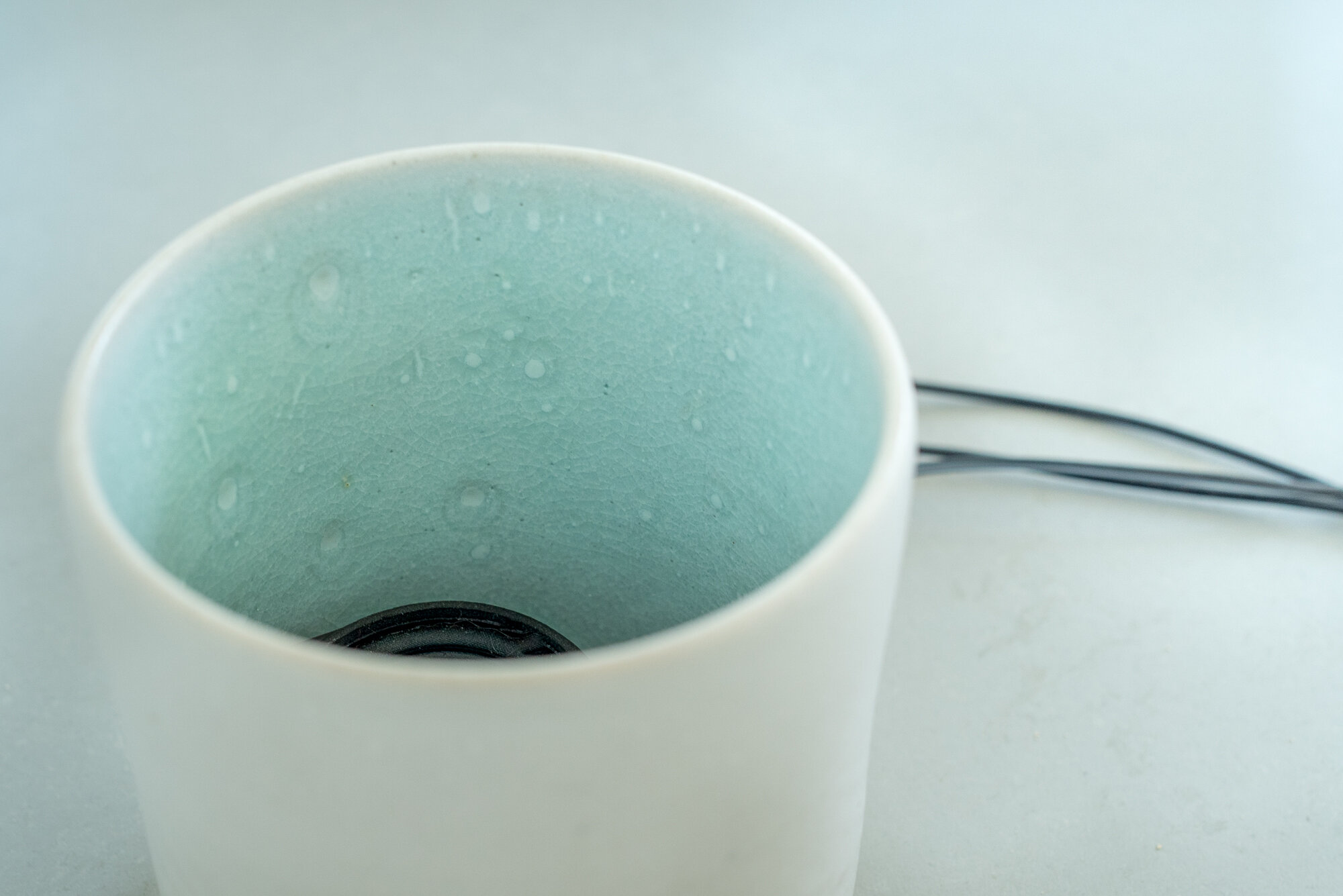Conversation Piece is a collaborative sculptural and audiovisual installation between Carly Fischer and Edwina Stevens that investigates interconnected dialogues between the artists material methodologies in response to questions of contemporary environmental engagement. The work extends the artists' collaborative practice and its interrogation of place-responsive practices, exploring how fragmentary and open encounters with environments might create alternate narratives that question broader, colonial perspectives. This specific collaboration draws on Edwina's audiovisual work 'Neve', recorded during a white-out on Te Moeka o Tuawe glacier, Aotearoa, where the shifting visibility of the glacial environment produced unexpected relationships between sonic and visual elements. Reflecting on how this alternate perspective opened up more generative engagements with the place, Conversation Piece extends this dialogue into a collaborative conversation between the artists material methodologies. Building on the sonic and visual materiality in 'Neve' through a series of accumulative sculptural and audiovisual feedback loops, the work seeks to explore how creating more collaborative conversations with places might shift political and environmental awareness.
Conversation Piece has been supported by the City of Melbourne COVID-19 Arts Grants
Conversation Piece is a collaborative Sculptural/Audio-Visual installation with Visual Artist Carly Fischer (www.carlyfischer.com) in development for exhibited across March-April 2021 at Bus Projects, Collingwood Yards, Narrm. The expansion of this project started from a previous audio-visual work ‘Neve’, to which Carly Fischer responds in clay/ceramics on a wheel. This process is recorded sonically and visually and played back alongside the thrown items, which are now vessels for small speakers as resonant bodies across the floor in different style of placement. The idea of the expanded/non conventional sound system is active here in the presence of air gaps, tubular extending ‘speaker enclosures’ made from different clays through differing firing techniques, unconventionally arranged throwing low-level sound around the room.
The original video work, Neve is projected onto another screen at an adjacent angle to the responsive Wheel video, the two videos engaging in ideas of oscillations, layered time and processes and materiality at place. The installation incorporates two channels of vision and stereo audio, spread out around the room within objects withs speakers strung together.
The soundscape itself is comprised of close recordings of the wheel’s metal resonant body as the motor runs within it, merged with the original soundscape of Neve the two take turns at occupying sonic space minimally in alternation.
All elements in this work are separate and of differing lengths. The soundscape is around 30 minutes. There is a link below to listen to the soundscape with the videos (best listened to on good quality headphones to hear the detail). The videos are two unrelated feeds, Neve is comprised of photographs, and Wheel is comprised of Carly Fischer’s hands forming clay on the wheel, in the same way that she formed the resonant vessels. By all being of differing lengths and start times, the elements all overlap and play differently together each time, therefore the installation is never experienced the same way twice.
Technical Details of the work :
SOUND :: The sound installation is a 4 channel composition that was mixed in the BUS exhibition space. This means there are 4 discrete ‘channels’ of sound, laid out in loose groups across the floor, connected by speaker wire. It’s difficult to distinguish which channels are where due to the scattered arrangement of the speakers in their resonant ceramic vessels, this adds to the atmospheric nature of the sound and allows the sound to move across the installation.
The 4 channels carry different ‘timbres’ of sound, some channels are more focused toward lower sounds, while other channels accommodate higher sounds (such as crunchy textures and blips, white noise etc). Certain powers and ranges of speakers were chosen to carry out each channels task while fitting inside the resonant ceramic vessels.
As you move around the work – you are welcome to walk amongst everything and look and listen closer – the sound comes up to meet you from the floor. Different channels will produce sound and different times, you will be listening to one sound and it will move away from you, or you will be near no sound and eventually it will come towards you if you wait.
It is difficult for the work to be heard sometimes, due to peripheral sounds and the intentionally non-conventional use of speaker drivers within resonant organic material. The work cannot just be ‘turned up’ as this increases the likelihood for feedback due to the more subtle resonant effects, this mean you have to be quieter, and move closer to listen.
VISION :: Neve is comprised of photographs, and Wheel is an overhead camera of Carly Fischer’s hands forming clay on the wheel, in the same way she formed the resonant vessels.
VESSELS and ARMATURE :: Carly Fischer has made the ceramic vessels on the wheel. The vessels were made at specific size to accommodate the speaker size and potential resonant frequencies. The armatures are made from wood, painted to relate to the Never glacier, or cracked ceramics. These structures stand to interrupt the projector beam so you may see the images clearly and lower to the ground along with the vessels.
